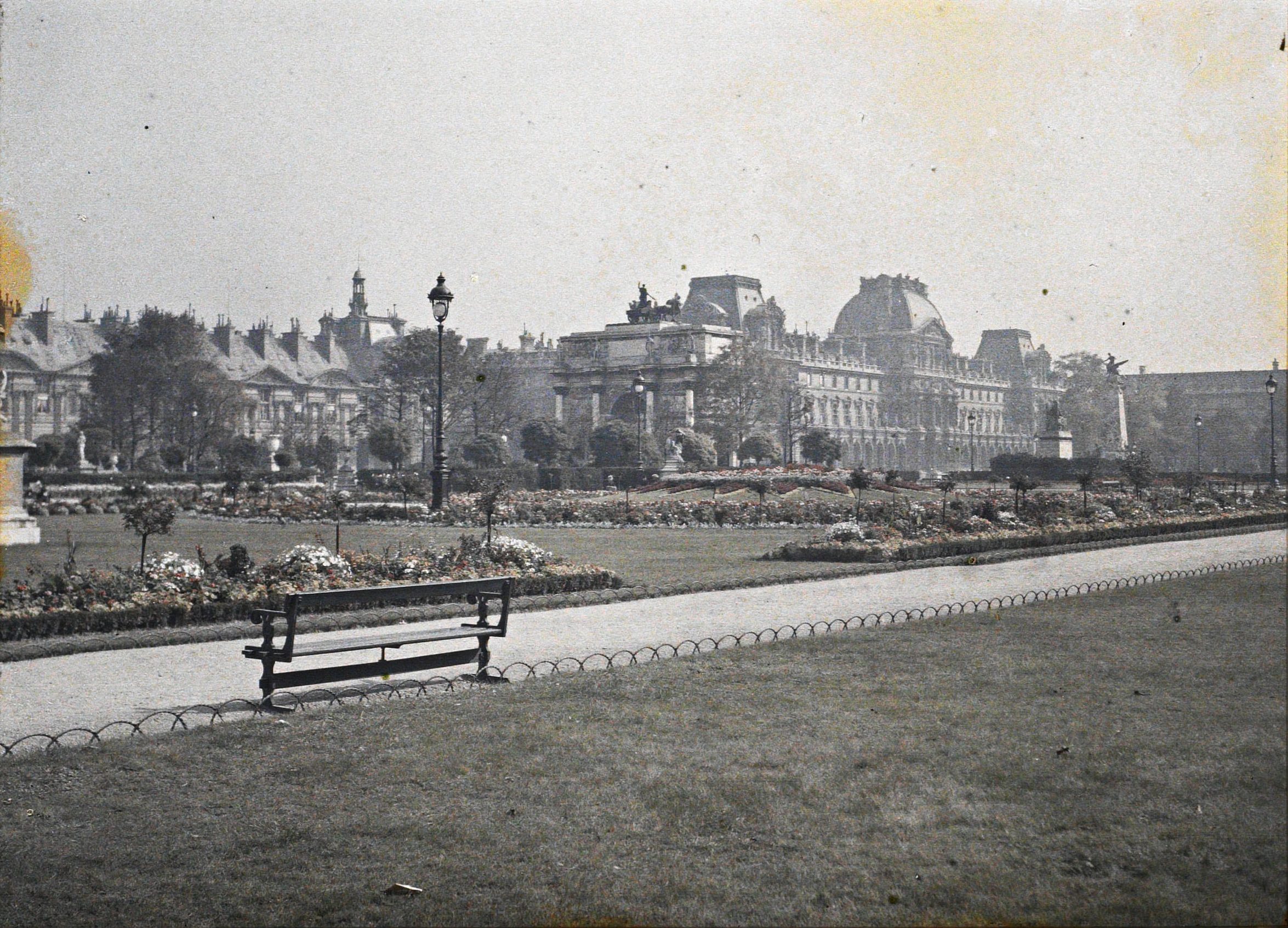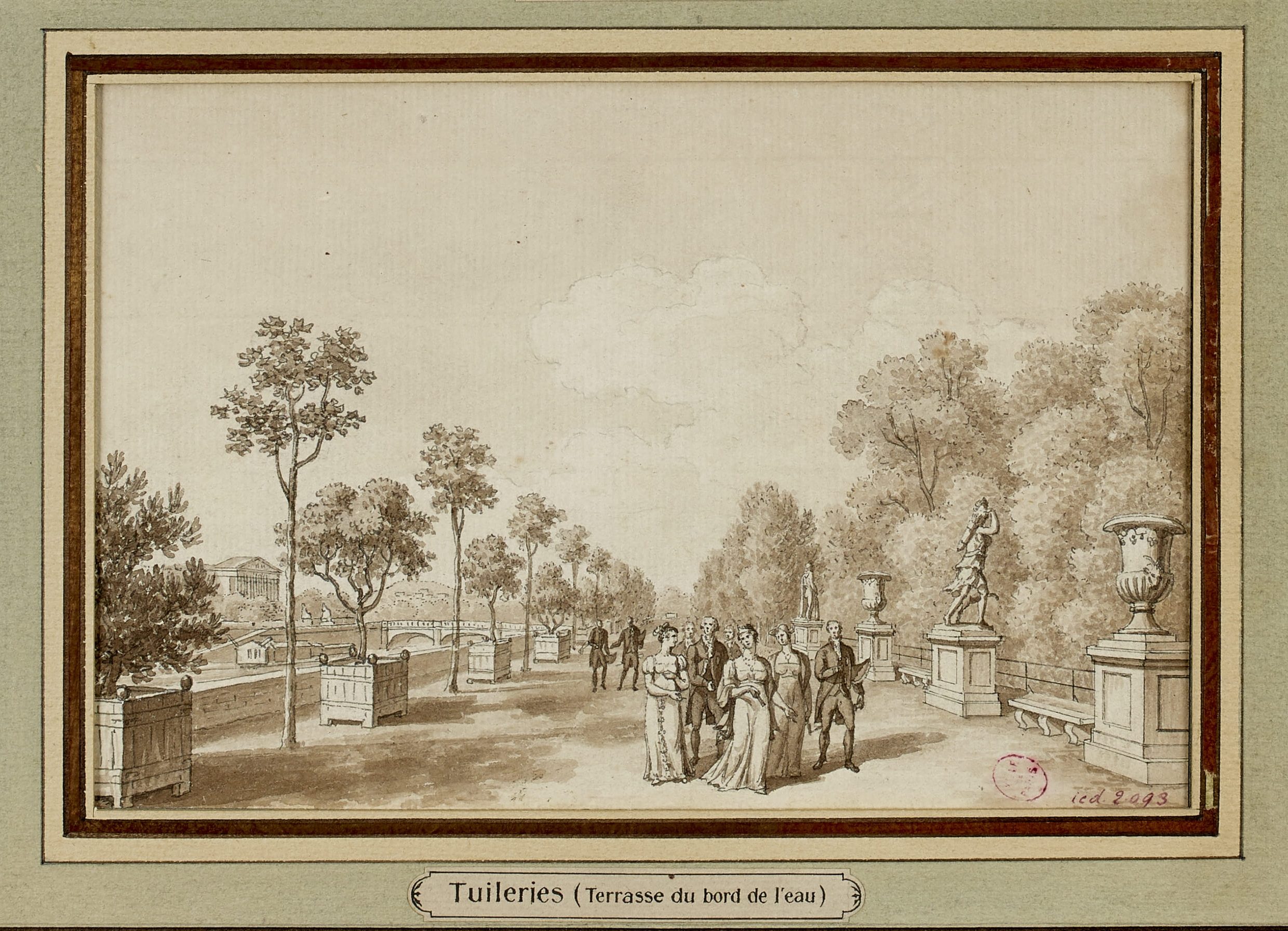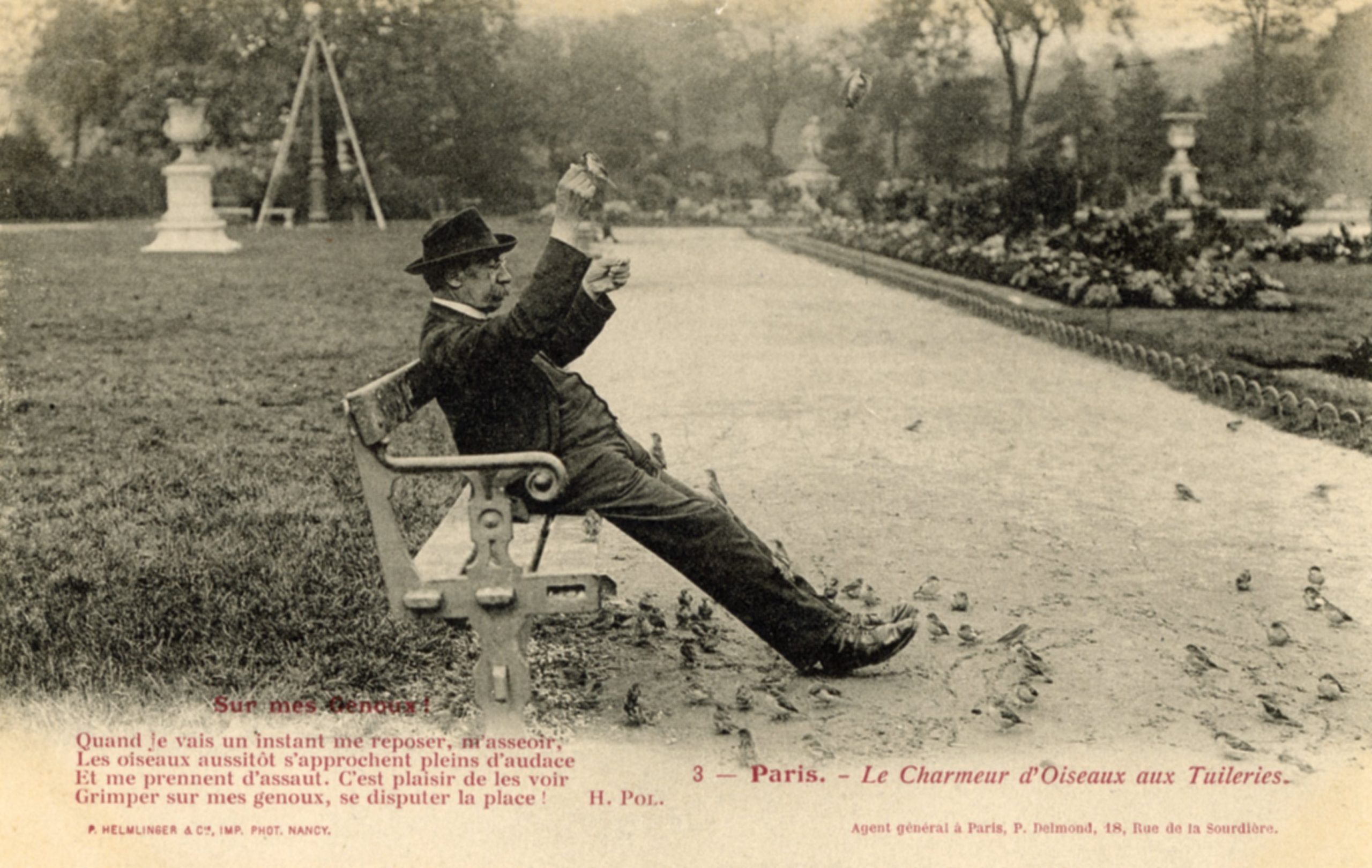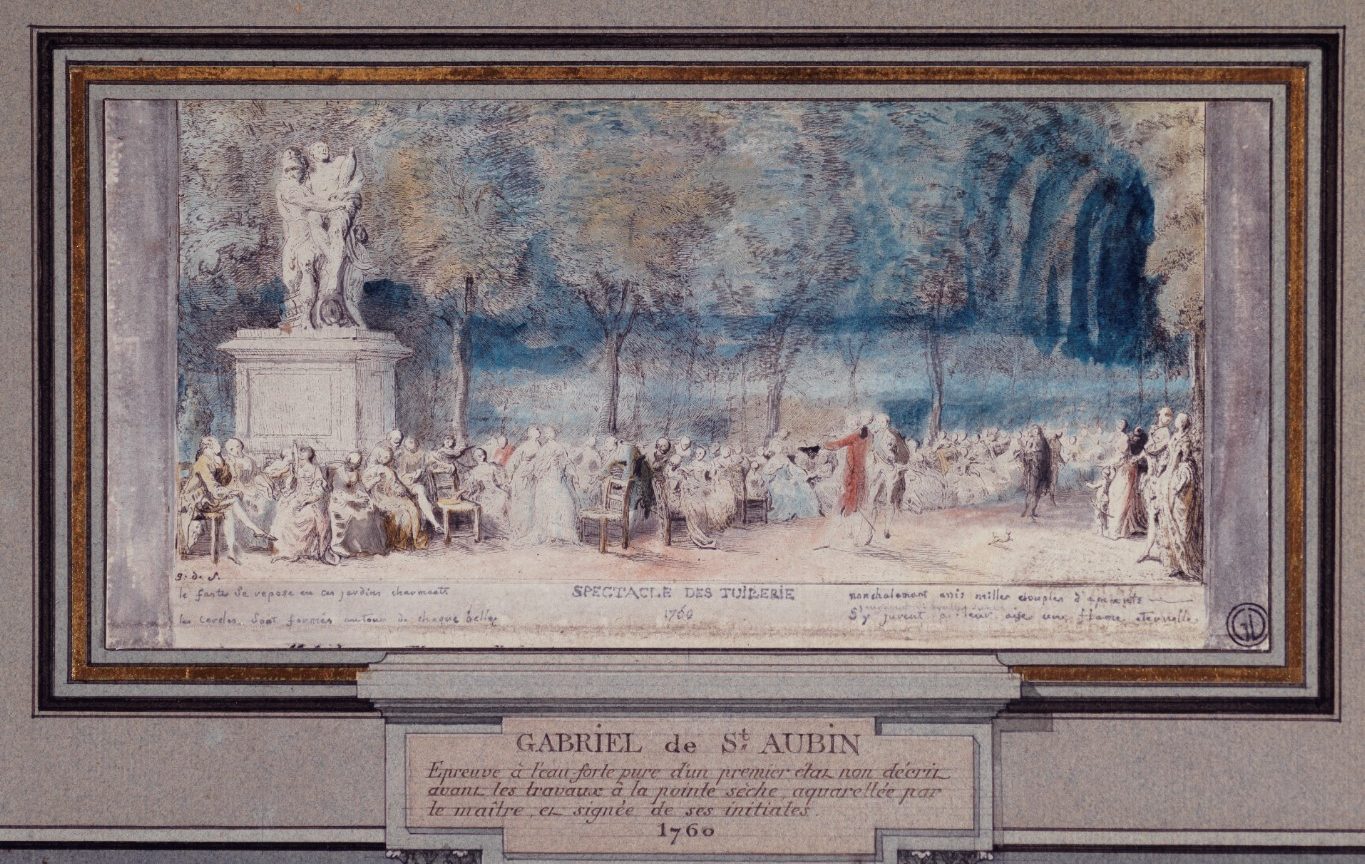
- Chronicle
A chronicler during the reign of Louis XV
Louis-Dominique Bontemps (1738–1766) was first valet to King Louis XV and governor of the Tuileries Palace and Garden. In 1760, he decided that wooden rental chairs would join the existing stone benches – and the proceeds of this activity were to be given to his mistress, Paris Opéra dancer Marie Allard!
This new practice came on the heels of another innovation: watering the Garden’s dusty paths by means of a barrel. That is why Gabriel de Saint-Aubin (1724–1780) decided to depict the two scenes in a diptych, which he would bring to life with the addition of watercolour.
Forever strolling with a pencil in hand, Saint-Aubin was an exceptional chronicler of daily life in Paris. He recorded thousands of amusing scenes in his sketchbooks and engravings – some from the city’s public gardens. Home to many of his works, the Louvre held an exhibition in his honour in 2008.
The sculpture on the right is easily recognisable – it is Pierre Le Pautre’s Aeneas Carrying His Father Anchises, Followed by Ascanius, made in Rome between 1697 and 1716. Initially placed in the park of the Château de Marly, in 1717, the sculptural group was installed west of the Grand Bassin Rondin in the Tuileries Garden. The work returned to the Louvre in 1989 and can be seen in the Cour Marly.
In this scene, Gabriel de Saint-Aubin juxtaposes the solemnity of the statues and the frivolity of the strollers. Verses on either side of the title explain the purpose of the chairs: ‘In these charming gardens splendour rests/Circles forming around each beauty/A thousand couples sit nonchalantly professing their undying love’. In other words, the chairs encouraged the kind of gallantry practised in high society.
Découvrez les
Chroniques du Jardin
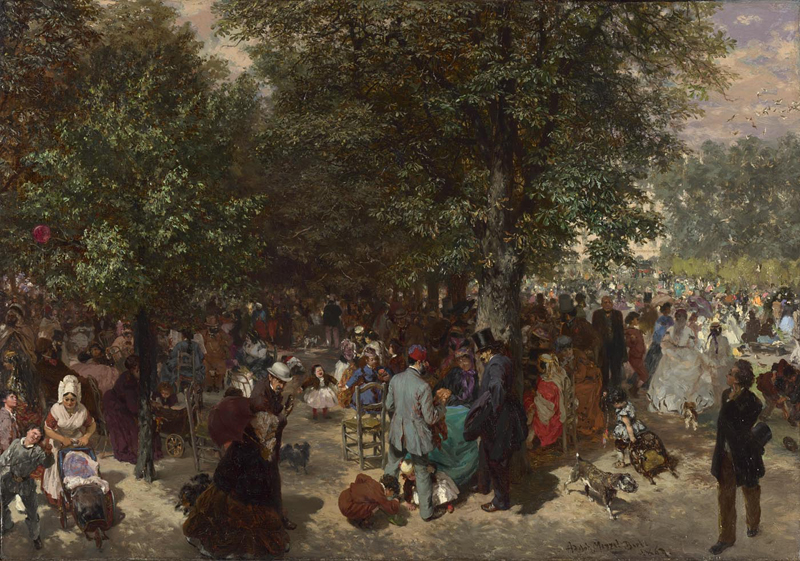
- Chronicle
